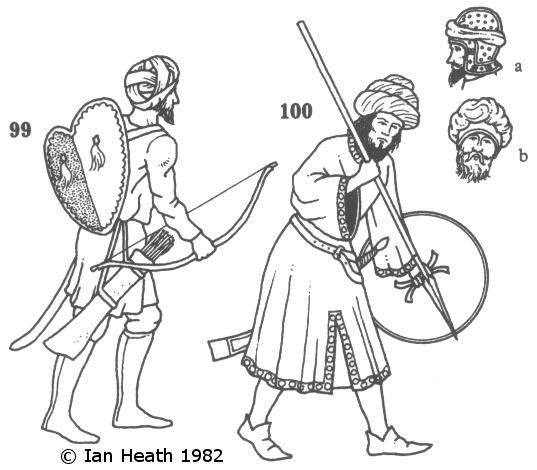
Find the perfect fit with Amazon Prime. Try Before You Buy.
GRANADINE FOOT-SOLDIERS, 15th CENTURY
An extract from Armies of the Middle Ages, volume 1by Ian Heath

| |
| [Based on William Caoursin's Obsidionis Rhodie Urbis Descriptio. A description of the 1480 siege of the city of Rhodes] | |
